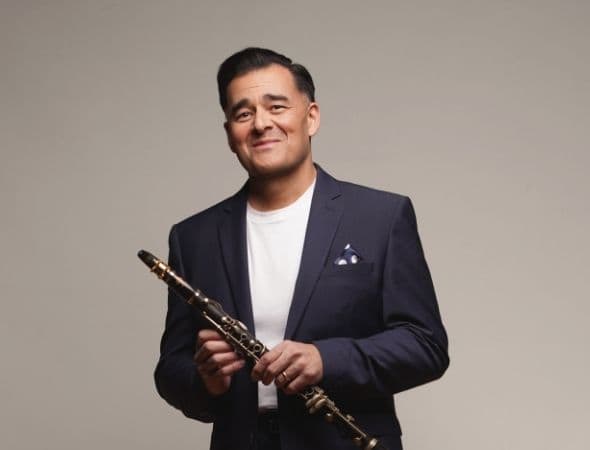22-23 SEASON PREVIEW: Tad Calcara
by Kathleen Sykes
When thinking through next season, there’s a variety of concerts that are exciting to our artists. But if you’re anything like Tad Calcara—our vintage suit-wearing, avid ferroequinologist, Americana loving, big band repertoire-playing Principal Clarinetist—there’s a single crown jewel on next season: Gershwin.
As you decide what concerts to include in your subscription next season, see why Tad thinks one particular concert will have you dancing in your seat and dreaming of a bygone era. Tad, with his infinite understanding of history and how it relates to music, of course, tells it best…

CONTEXT: Music on the move
One of the unique characteristics of music is its ability to transport the listener back in time. Some composers achieve this by imitating the sounds of daily life into their music.
For George Gershwin—and many composers before and after him—the sounds of trains have been a source of fascination. Back in the 1920s, Americans were on the move, and the preferred mode of transportation was by train. Trains at that time were drawn by magnificent steam powered locomotives that produced a cornucopia of rhythmic sounds that delighted composers. Unlike today’s modern relatively silent locomotives, the reciprocating steam locomotive that harnessed the power of steam made the characteristic “chug-a-chug” sounds as the cylinders drove the massive drive wheels that allowed the train to speed along the tracks. There was also the rhythmic “clickety clack” as the wheels rolled over the rail joints.
Because of the way the rails were laid out on the track—with the rail joints staggered—it produced a syncopated swinging rhythm as the wheels rolled along. Then of course there was the clanging bell and wailing whistle warning pedestrians and motorists of the train’s impending passage.
Blue Rhapsody: 100 Years of Rhapsody in Blue & Concerto in F
Composer Duke Ellington once said he loved traveling by train and listening as it gathers speed through the night as “the firemen play blues on the engine whistle. ” It is also known that Gershwin wrote part of his celebrated Rhapsody in Blue while traveling on a train from Boston to NYC. If you listen carefully, you can hear many of the railroad sounds Gershwin included in the piece.
Gershwin borrowed many of these elements and incorporated them musically in a most imaginative way; from syncopated melodies to harmonic sonorities that were reminiscent of the locomotive’s whistle. However, one of the most novel devices Gershwin uses is the “chugga rhythm” which mimics the sound of a working steam locomotive. This distinctive sound is present in many of his pieces. You can hear this in many moments in his opera Porgy & Bess—and it is prominently featured in the second movement of his Concerto in F.
Listen for the brushes on the snare drum with slight accents on beats one and two.
By the way…
Speaking of train sounds with regards to the Utah Symphony; did you know that Maurice Abravanel Hall was built on the site of a former railroad station? For some 50 years trains used the Union Interurban Station located exactly where our concert hall stands today!
While you’re impressing your friends with your new-found George Gershwin knowledge this season, don’t forget to subscribe and add on tickets to see “An American in Paris” Film in Concert to get your full, Gershwin fix!











